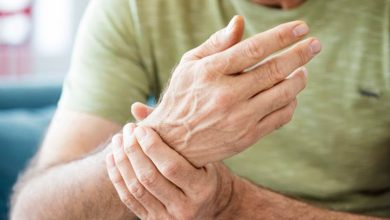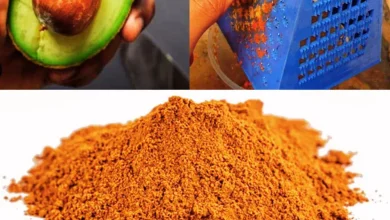When to Be Concerned About Suddenly Visible Veins: A Guide to Understanding Your Body

It’s common for our bodies to change over time, and sometimes, veins become more noticeable. Often, seeing your veins more clearly is perfectly normal, especially as we get older or if we’re very active and fit. However, if veins suddenly “pop out” or become much more visible without a clear reason, this change can sometimes be a signal that something else is going on with your health.
Whether it’s simply because of your family’s genes, the way you live your life, or even a medical issue, it’s really helpful to know when seeing more veins is nothing to worry about and when it means you should talk to a doctor. Let’s take a closer look at why veins might suddenly become more noticeable and when it’s definitely a good idea to chat with a healthcare professional. Understanding these signs can help you take good care of your body.
What Makes Veins More Visible in the First Place?
Many things can cause veins to show up more clearly, and most of these reasons are completely harmless. Here are some common ones:
- Getting Older: As we get older, our skin naturally becomes thinner and loses some of its fullness. This makes the veins underneath more obvious, especially on parts of the body like your hands, arms, and legs. It’s a very common part of the aging process.
- Being Physically Fit: If you exercise regularly, especially activities that build muscle, your muscles can get bigger and push the veins closer to the surface of your skin. Also, highly active people often have less body fat, which also makes veins more noticeable. This is usually a sign of good health and strong circulation!
- Changes in Hormones: For women, things like pregnancy, going through menopause, or even normal changes in hormone levels during their monthly cycle can affect how visible veins are. This is particularly true for veins in the legs.
- Spending Time in the Sun: Too much sun exposure can make your skin thinner over time. When skin is thinner, veins are naturally easier to see, especially on areas like your hands and face.
- Not Drinking Enough Water (Dehydration): If your body doesn’t have enough water, your blood can become thicker, and your veins might appear more prominent. This is usually a temporary effect and gets better once you’re properly hydrated.
- Varicose or Spider Veins: These are types of veins that have become enlarged, twisted, or look like a spiderweb. They can become more noticeable over time, often because the tiny doors (valves) inside the veins that help blood flow back to your heart aren’t working as well as they should.
When Should You Really Be Concerned About Your Veins?
While it’s true that visible veins are often nothing to worry about, there are certain signs and feelings that might mean there’s a problem underneath. “Seek medical advice if you notice any of the following:” This means it’s a good idea to talk to a doctor if you experience any of these symptoms:
- They Suddenly Appear Without a Clear Reason: If your veins suddenly look much more noticeable and you haven’t recently lost a lot of weight, started a new intense exercise routine, or noticed them slowly over time due to aging, it could be a sign of a deeper issue with your blood vessels. It’s like your body is trying to tell you something.
- You Feel Pain, Swelling, or Discomfort: If you feel pain, tenderness, swelling, or if the skin around the veins feels warm to the touch, this could be a sign of a blood clot. A serious type of blood clot is called deep vein thrombosis (DVT), and it needs “immediate medical attention.” Don’t wait if you have these symptoms.
- There Are Changes in Skin Color or Texture: If the skin near your veins starts to change color (like becoming discolored or red) or if you develop sores or ulcers that don’t heal, this could mean you have poor blood flow or problems with how your veins are working (venous insufficiency).
- Veins Are Bulging or Twisted and Causing Issues: If you have varicose veins that are very large, look twisted, and are causing you pain, itching, or a heavy feeling in your legs, it’s a good idea to have them checked by a doctor who specializes in veins (a vascular specialist).
- You Have Other Body-Wide Symptoms: If the suddenly visible veins come along with other general symptoms like feeling very tired all the time, having trouble breathing, feeling dizzy, or losing weight without trying, these could point to a larger problem affecting your whole body, such as issues with your heart or liver.
- You Have a Family History of Vein Problems: If close family members have had blood clots, varicose veins, or other issues with their blood vessels, and you notice sudden changes in your veins, it might mean you need to be checked more closely by a doctor. Your family history can sometimes make you more likely to have certain conditions.
Possible Health Conditions That Might Cause Visible Veins
Here are some specific medical conditions that could be behind suddenly visible veins:
- Venous Insufficiency: This happens when the veins have trouble sending blood back to the heart effectively. This can make them stand out more and often leads to swelling or discomfort, especially in the legs.
- Liver Disease: Problems with the liver can lead to a condition where blood pressure in the liver’s main vein becomes too high (called portal hypertension). This can cause veins, especially those on the abdomen (stomach area), to become much more visible.
- Hormonal Imbalances: Conditions where your body’s hormone levels are out of balance, such as certain thyroid problems, can sometimes affect how noticeable your veins are.
- Blood Clotting Disorders: Some health conditions make your blood more likely to form clots. These clots can make veins more prominent or cause pain. An example is thrombophilia.
- Peripheral Artery Disease (PAD): While this primarily affects arteries, reduced blood flow to your arms and legs can sometimes make veins appear more noticeable. This condition often comes with cramping or pain in the limbs when you’re active.
What Can You Do if You’re Concerned?
If you’re worried about veins that have suddenly become more visible, here are some helpful steps you can take:
- Watch Your Symptoms Closely: Pay attention to any other feelings or changes you notice, like pain, swelling, or changes in your skin color. Write them down so you can share all this information with your doctor.
- Stay Well Hydrated: Remember that temporary dehydration can make veins stand out more. Make sure you’re drinking enough water throughout the day.
- Lift Your Legs Up: If you notice more visible veins in your legs, raising your legs above your heart for a while can help improve blood flow and reduce any swelling.
- Consider Wearing Compression Socks: For veins in your legs, special socks called compression garments can gently squeeze your legs. This helps blood flow better and can reduce discomfort.
- Don’t Stand or Sit for Too Long: Try to move around regularly instead of staying in one position for long periods. Moving helps keep blood from collecting in your veins.
- Talk to Your Doctor: If you’re not sure why your veins are suddenly more visible, or if you have any of the worrying symptoms mentioned earlier, “schedule an appointment with your healthcare provider.” They might suggest tests like imaging scans or blood work, or they might send you to a doctor who specializes in veins.
When to See a Doctor Right Away (Emergency Care)
It’s very important to know when to get help immediately. “Seek emergency care if you experience:”
- Severe pain or significant swelling in an arm or leg.
- Redness or warmth along a vein, especially if it’s accompanied by pain. This could be a sign of a blood clot that needs urgent attention.
- Shortness of breath, chest pain, or coughing up blood. These could be signs of a serious and life-threatening condition called a pulmonary embolism, which can happen if a blood clot travels to your lungs. This is an emergency!
Conclusion: It’s Important to Listen to Your Body
Even though visible veins are often a normal and harmless part of life, any sudden changes—especially if they come with pain, swelling, or other worrying symptoms—are “not to be ignored.” By being aware of your body, knowing what to look for, and taking action when needed, you can address any concerns early and make sure your vein health stays in good shape. Your body often gives you clues; it’s good to pay attention to them.




